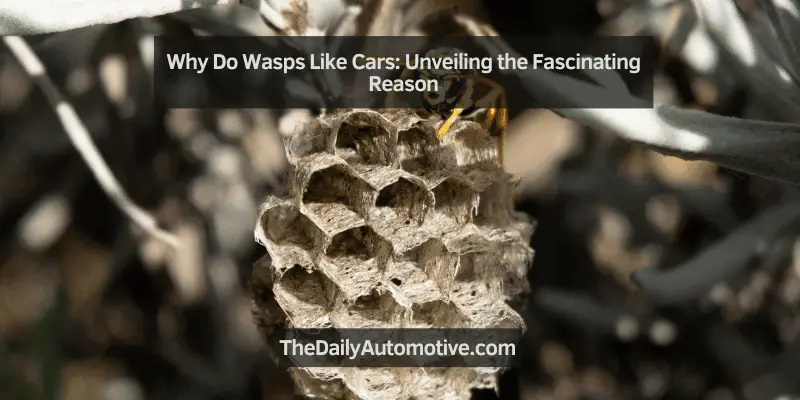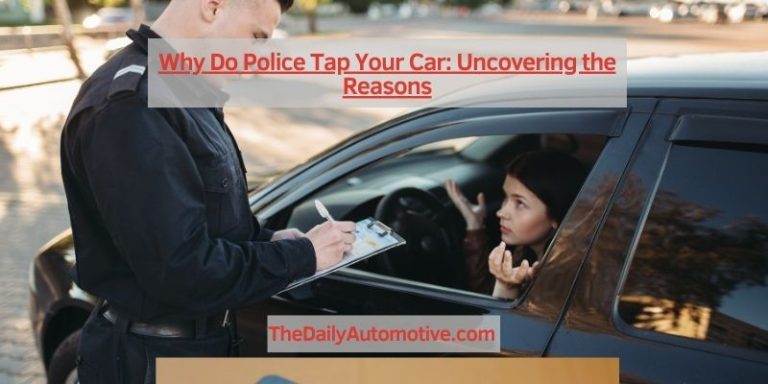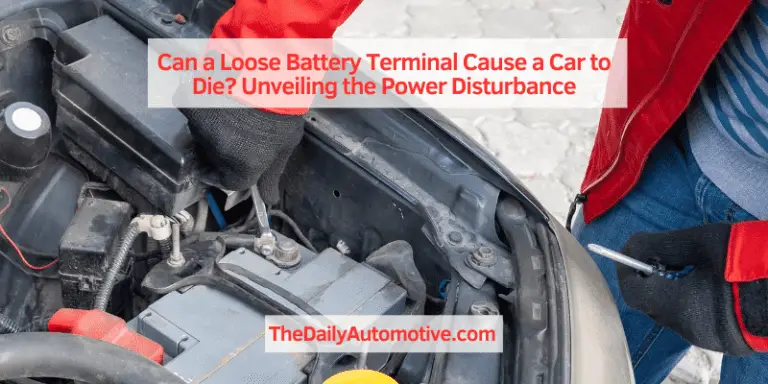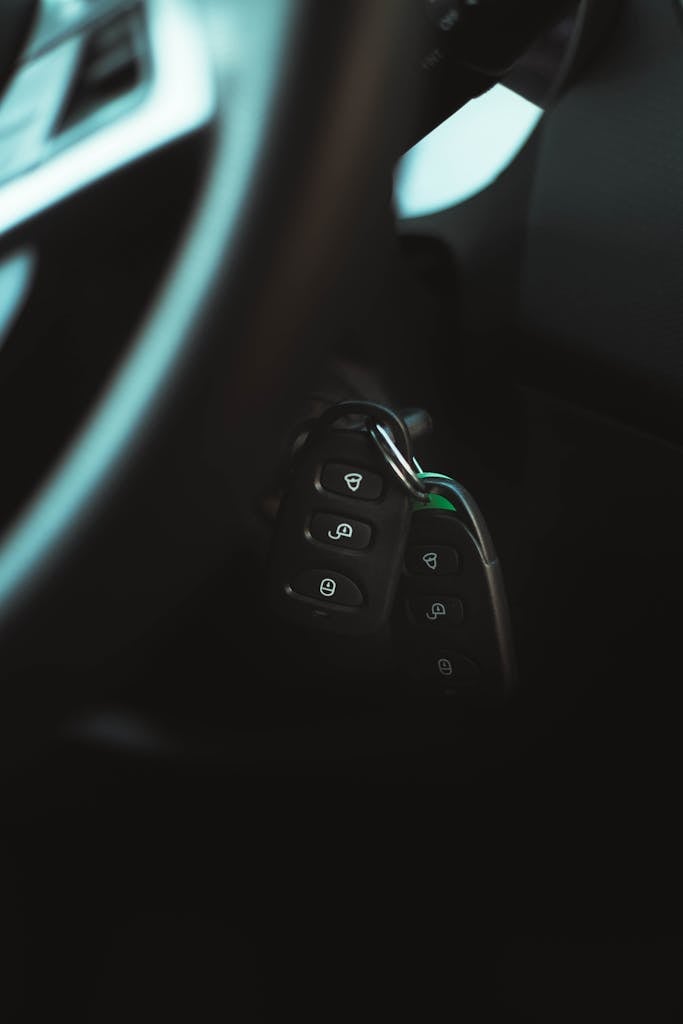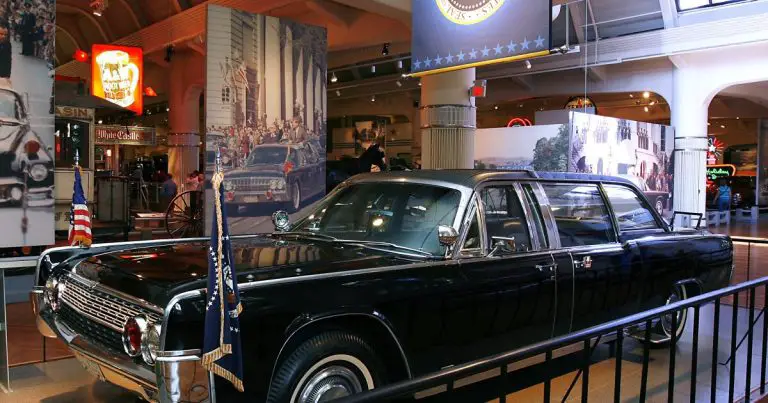Why Do Wasps Like Cars: Unveiling the Fascinating Reason
Wasps are attracted to cars due to the warm and sheltered environment they provide. These insects seek refuge in vehicles to nest and lay eggs.
Wasps are notorious for their ability to intrude on human spaces and cause discomfort or fear. While encountering these buzzing creatures inside our homes or gardens is common, it can come as a surprise to find them inside our cars.
The question arises: why do wasps like cars? Understanding the answer to this intriguing phenomenon can help us prevent their presence and keep our vehicles wasp-free. It all comes down to the environmental conditions that cars offer. We will explore the reasons why wasps are attracted to cars and the steps we can take to deter them. By understanding their behavior, we can mitigate the risk of encountering these stinging insects when we least expect it.

Credit: worldanimalfoundation.org
The Curious Love Affair: Wasps And Cars
Wasps seem to have an unusual attraction to cars, but why? Discover the intriguing love affair between wasps and cars and uncover the possible reasons behind this peculiar phenomenon.
The Surprising Attraction: A Closer Look At Wasps’ Fascination With Cars
Wasps and cars may seem like an unlikely pair, but there’s an intriguing connection between these buzzing insects and our four-wheeled vehicles. These seemingly innocent wasps often find themselves inexplicably drawn toward cars, eagerly exploring their shiny exteriors and occasionally even making themselves at home inside.
Let’s delve into this curious love affair and uncover the reasons behind wasps’ fascination with cars.
Understanding The Puzzling Behavior: Exploring The Reasons Behind This Phenomenon
Why do wasps have an affinity for cars? It’s a fascinating question that has puzzled many. Here, we’ll take a closer look at several possible explanations for this phenomenon:
- Shelter and Warmth: Cars often provide a cozy shelter for wasps. The tight spaces within the structure of a car can be attractive to these creatures, especially during colder weather. They may seek refuge in crevices, vents, or even inside the engine compartment, where they can find warmth and protection from the elements.
- Availability of food: Wasps are omnivorous creatures, and they have a particular fondness for sugary substances. Any remnants of food or spills on car surfaces, such as soda or fruit juice, can serve as irresistible invitations. Wasps perceive these sugary residues as potential sources of nourishment, prompting them to investigate and sometimes become a nuisance.
- Visual appeal: The shiny, reflective surfaces of cars might capture the attention of wasps, who are naturally attracted to bright colors and reflective objects. This visual allure may entice them to investigate further, even though cars have no direct relevance to their natural environment.
- Environmental cues: Wasps have a keen sense of smell and are sensitive to various scents. It’s possible that cars emit odors that mimic certain natural substances commonly associated with food or nesting locations for wasps. This olfactory confusion might trick the wasps and lead them to explore cars in search of these perceived resources.
While these explanations shed some light on the attraction, the exact reasons behind wasps’ affinity for cars are still not entirely understood. It’s essential to remember that wasps, like other creatures, are complex beings influenced by a combination of factors, including their instincts and environment.
So, the next time you spot a wasp taking a keen interest in your car, don’t be too surprised. It’s simply a part of their peculiar nature—a curious love affair between wasps and cars that continues to intrigue researchers and enthusiasts alike.
The Intriguing Interplay: Connecting Wasps And Cars
Did you ever wonder why wasps seem to have a fascination with cars? Discover the intriguing interplay between wasps and cars and unravel the mystery behind this unusual attraction.
If you’ve ever noticed wasps buzzing around your car, you might be curious about why these seemingly unrelated creatures have developed an affinity for automobiles. The interplay between wasps and cars is indeed fascinating, with several factors contributing to this intriguing phenomenon.
In this section, we’ll delve into the wasp’s perspective, their ability to perceive cars, and the possibility of communication through car surfaces.
Unveiling The Wasp’s Perspective: How Do They Perceive Cars?
When it comes to understanding why wasps are attracted to cars, it’s essential to explore their perception of these vehicles. Wasps, like many insects, rely on their senses to navigate and find resources. Here’s a glimpse into how wasps perceive cars:
- Visual clues: Wasps possess keen eyesight, detecting cars through visual cues such as shape, color, and movement.
- Size and structure: The size and solid structure of cars may appear attractive to wasps, resembling potential nesting sites or offering shelter.
- Reflective surfaces: The reflective surfaces of cars may catch the attention of wasps, who mistake them for water bodies or food sources.
- Heat signature: Cars generate heat, especially when parked under the sun, attracting wasps seeking warmth.
The Role Of Vision: Shedding Light On Wasps’ Ability To Identify Cars
Vision plays a significant role in a wasp’s ability to identify and approach cars. Let’s take a closer look at how their vision contributes to this fascinating interplay:
- Color perception: Wasps can distinguish different colors, making them capable of identifying specific cars or even certain car parts.
- Object recognition: With their sophisticated compound eyes, wasps can recognize and remember objects, including cars, in their environment.
- Motion detection: Wasps are adept at detecting movement, enabling them to spot cars passing by or parked in their vicinity.
- Pattern recognition: Certain patterns, such as stripes or patterns resembling prey or potential nest sites, may intrigue wasps and attract them to cars.
Exploring The Possibility Of Wasp Communication Through Car Surfaces
While wasps primarily rely on visual cues for navigation and perception, it’s intriguing to consider the possibility of communication through car surfaces. Here are a few factors to ponder:
- Vibrations: Cars produce vibrations, which could potentially serve as a means of communication for wasps, alerting them to the presence of other wasps.
- Pheromones: Wasps communicate through the release of pheromones, chemicals that transmit specific messages. It’s conceivable that these pheromones could be left on car surfaces, acting as signals to other wasps.
- Nesting opportunities: Cars offer various nooks and crannies, which could inadvertently become potential nesting sites, attracting wasps in search of suitable locations.
In the complex world of wasps and their interaction with cars, their perspective, visual perception, and the intriguing possibility of communication through car surfaces all contribute to this intriguing interplay. While more research is needed to fully understand the phenomenon, it’s clear that there is more to the relationship between wasps and cars than meets the eye.
The Irresistible Allure: Reasons Wasps Seek Cars
Wasps are known to have an inexplicable fascination with cars. This can be attributed to the presence of shelter, warmth, and potential food sources inside vehicles, making them an irresistible option for these buzzing insects.
Cars seem to possess an irresistible charm to wasps, drawing them in like a magnet. But what exactly is it about these vehicles that make them so appealing to these buzzing creatures? Let’s delve into the factors that make cars a captivating abode for wasps.
Magnetic Draw: Analyzing The Factors That Make Cars Attractive To Wasps
Cars possess certain characteristics that inexplicably attract wasps, turning them into frequent visitors. Here are some key factors that contribute to this magnetic allure:
- Warmth: The surfaces of cars, especially on sunny days, radiate warmth, providing a cozy spot for wasps to rest and soak up the sun.
- Vibration: The subtle vibrations produced by a running vehicle can be enticing to wasps, mimicking the vibrations emitted by flowers, which they associate with a potential food source or a suitable mate.
- Colors and patterns: Brightly colored cars, especially those with floral patterns, can resemble flowers to wasps, confusing them and drawing them closer.
- Smells: Cars often emit odors that can attract wasps, such as leftover food, sugary spills, or even the scent of humans.
A Safe Haven: Investigating The Shelter And Protection Offered To Wasps By Cars
Beyond the initial attraction, cars provide wasps with a secure haven, shielding them from external threats and offering a protective environment. Consider the following factors that make cars a safe sanctuary for these winged creatures:
- Cavities and crevices: The various gaps and openings in a car, such as vents, door handles, or even side mirrors, create ideal spaces for wasps to build their nests, shielded from predators and adverse weather conditions.
- Elevated position: Cars provide elevated platforms for wasps to construct their nests, offering protection from ground-dwelling predators like ants and spiders.
- Limited access: Parked cars restrict the access of larger predators, such as birds or mammals, providing a safe environment for wasps to thrive undisturbed.
Nectar-Like Temptations: The Tempting Resources Surrounding Cars That Attract Wasps
Cars inadvertently provide wasps with tempting resources that appeal to their foraging instincts, accentuating the allure of these vehicles. Explore the following nectar-like temptations that make cars irresistible to these buzzing insects:
- Sugary residues: Cars often harbor sugary residues from spilled drinks or food, which act as attractants to wasps, satisfying their craving for carbohydrates.
- Pollen deposits: Flowers near parking areas can leave traces of pollen on cars, creating a supplementary food source for wasps that may mistake the residue for actual pollen.
- Insect prey: Wasps are predators themselves, and cars attract other insects like flies and gnats. These unwitting insect visitors present additional food sources for wasps.
In the intriguing world of wasps, cars possess a distinct allure. From the warmth they radiate to the colors that resemble flowers, cars offer a fascinating array of stimuli that captivate these buzzing creatures. Additionally, the protective shelter and abundance of resources surrounding vehicles contribute to their appeal.
Understanding the factors that make cars attractive to wasps sheds light on their behavior and the intricate relationship between nature and human-made objects.
The Ecological Impact: Understanding The Importance Of Wasps’ Interest In Cars
Wasps and cars may seem like an odd combination, but understanding the reasons behind their attraction to vehicles is key to appreciating their ecological impact. Uncover the surprising importance of wasps’ interest in cars and the significance it holds for our ecosystem.
Wasps are fascinating creatures that have developed a peculiar attraction towards cars. While this may seem like a random quirk, it actually has significant ecological implications. Understanding the reasons behind this behavior and its impact on the environment can help shed light on the role of wasps in our ecosystems and potentially provide insights into leveraging this relationship for the benefit of both nature and humans.
The Contribution Of Wasps: Examining Their Role In Natural Pest Control
- Wasps are voracious predators, feeding on a wide range of insects, including garden pests like aphids and caterpillars.
- By preying on these pests, wasps help keep their populations in check, reducing the need for harmful pesticides.
- This natural pest control system is essential for maintaining the delicate balance of ecosystems.
Environmental Implications: Assessing The Effects Of Wasps’ Attraction To Cars On Ecosystems
- The attraction of wasps to cars can lead to an increased concentration of these insects in urban areas.
- This shift in population distribution can have a cascading effect on other organisms and their interactions within the ecosystem.
- Increased wasp activity near cars can disrupt the pollination process of flowering plants, affecting the reproduction of both wildflowers and agriculture crops.
- The accumulation of dead wasps on roads and parking lots can also affect the scavenger community and nutrient cycling.
Leveraging The Relationship: Exploring Potential Benefits Or Solutions
- Researchers and conservationists can study the behavior of wasps around cars to better understand their preferences and ecological needs.
- Developing solutions that discourage wasps from congregating around vehicles can help minimize potential negative effects on ecosystems.
- Implementing eco-friendly gardening practices that promote beneficial insects, including wasps, can enhance natural pest control while reducing the reliance on chemical pesticides.
- Educating the public about the importance of wasps in ecosystems and the potential benefits of their attraction to cars can foster a greater appreciation for these often misunderstood insects.
By examining the ecological impact of wasps’ interest in cars, we can gain valuable insights into the role of these insects in natural pest control and the intricate web of interactions that shape our ecosystems. Through continued research and sustainable practices, we can harness the potential benefits of the relationship between wasps and cars while safeguarding the delicate balance of our environment.
So the next time you see a wasp buzzing around a parked car, remember that there’s more to this peculiar fascination than meets the eye.
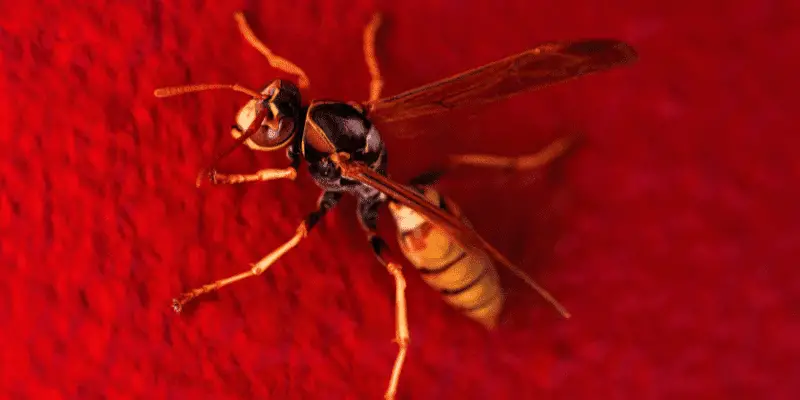
Frequently Asked Questions On Why Do Wasps Like Cars
Why Are Wasps Drawn To Cars?
Wasps are attracted to cars because they are attracted to the smells and sights around them. The sweet smells from food, drinks, and garbage can lure them. The heat of the engine can also draw them in. Additionally, the colors and patterns of a car can resemble a potential nest site for wasps.
To avoid attracting wasps to your car, make sure to keep it clean, especially from food and drink residues. Also, try to park in areas that are not near nests or garbage cans. If you already have wasps around your car, do not swat at them, as this may provoke them.
Instead, calmly and slowly move away from the area to decrease their interest. It’s also a good idea to consult with a professional pest control service if the issue persists.
Why Do Wasps Like Car Mirrors?
Wasps are attracted to car mirrors due to their reflective surfaces, which they mistake for other wasps. The mirrored reflection resembles a potential competitor or threat, leading the wasps to engage in territorial behavior. This territorial instinct compels them to investigate and attack their perceived rivals, resulting in them buzzing around and occasionally landing on car mirrors.
Additionally, wasps are also attracted to the warm surface of the mirrors, particularly on sunny days, as they find it a suitable place to bask in the sun. To prevent wasps from gathering around your car mirrors, you can try using repellents specifically designed to deter insects or covering the mirrors with a non-reflective material.
Why Are Bees Attracted To The Front Of My Car?
Bees are attracted to the front of your car because they are attracted to the bright colors and the scent of flowers. The flowers on your car can look like a potential food source for the bees. Bees are also attracted to the warmth coming from the engine of your car, especially during cooler weather.
They may think it’s a good place to rest or even build a nest. It’s important to note that bees are essential pollinators and play a crucial role in our ecosystem. If you want to avoid attracting bees to your car, you can try parking in shaded areas or washing off any flower residue from your car’s surface.
Remember, bees play an important role in our environment, so be gentle and cautious when dealing with them.
Why Does Gasoline Attract Wasps?
Gasoline attracts wasps because it releases a combination of chemicals that are appealing to them. These chemicals include ethylene and other hydrocarbons. Wasps are drawn to the scent of these compounds, which they associate with food sources, such as fruit and flowers.
Additionally, gasoline can have a sweet or floral odor, which further attracts wasps. Once attracted to gasoline, wasps may land on it or even try to consume it, mistaking it for a food source. However, ingesting gasoline can be harmful to the wasps, potentially leading to their death.
It’s important to be cautious around areas with gasoline, especially when it comes to maintaining a safe distance from wasps and avoiding any potential stings.
Conclusion
It is understandable why wasps are attracted to cars. The combination of heat, shelter, and potential food sources makes cars an ideal environment for these stinging insects. The warmth emitted by engines and exhaust pipes provides a cozy spot for wasps to build their nests, while the protected crevices in and around vehicles offer a safe haven.
Additionally, the remnants of sugary drinks and food crumbs left over in cars can naturally attract wasps in search of sustenance. And let’s not forget that wasps are also drawn to the bright colors of cars, mistaking them for flowers or fruitful vegetation.
While it can be quite bothersome to find wasps buzzing around your vehicle, it’s important to remember that they serve a purpose in our ecosystems. By understanding their behavior and taking preventive measures, we can coexist with these buzzing creatures without causing harm or unnecessary panic.
So, the next time you have wasps buzzing around your car, you’ll know why they’re there and how to handle the situation calmly and responsibly.

